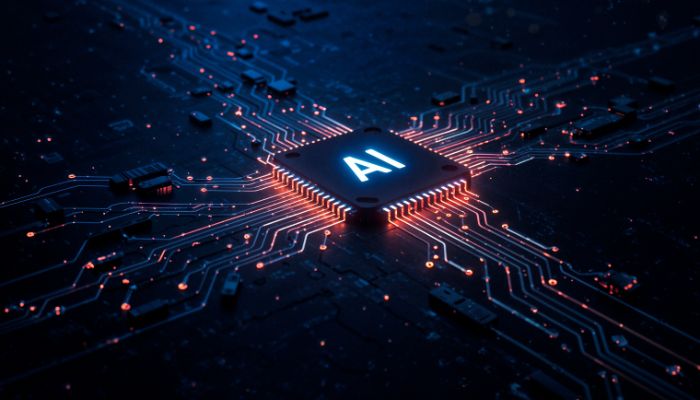In developing economies like India, the adoption of Artificial Intelligence (AI) must be both strategic and inclusive, designed to enhance productivity and accessibility without eroding jobs for millions. The challenge is not whether to embrace AI, but how to integrate it in ways that fill critical gaps, create new opportunities, and safeguard livelihoods. AI holds transformative potential in sectors such as healthcare, agriculture, and education—enabling early disease detection in rural clinics, supporting precision farming to boost yields, and delivering personalized learning to students in under-resourced schools. Similarly, its applications in disaster management, supply chain optimization, and financial inclusion can yield high-impact benefits without undermining human roles. Yet, unrestrained automation in labor-intensive industries like traditional manufacturing, small-scale retail, and artisanal crafts risks displacing vast sections of the workforce, with few pathways for reabsorption. In such sectors, human labor remains an economic necessity as well as a cultural and social asset, making augmentation—not replacement—the wiser course. This approach is not anti-technology; it is purpose-driven innovation aimed at fostering equitable growth.
India’s path to AI adoption must be sector-specific—aggressively advancing in areas where it can address critical needs and expand employment, while exercising restraint in industries where it threatens livelihoods—ensuring that technological progress aligns with inclusive and sustainable development. Achieving this balance will require coordinated policy frameworks, industry commitments to “human-first” AI, and large-scale reskilling programs to ensure the workforce remains adaptable in a changing economy.
Healthcare Access and Diagnostics
AI’s role in Indian healthcare is both transformative and well-documented. The World Economic Forum estimates that AI spending in India will reach $11.78 billion by 2025, with the potential to add $1 trillion to the economy by 2035. The Economic Survey 2024–25 describes AI as the “new nervous system” of Indian healthcare—boosting diagnostic accuracy, accelerating drug discovery, and enabling remote patient monitoring. In Rajasthan, AI-powered analysis of silicosis via digital X-rays has expedited early detection, while Uttarakhand’s eSwasthya Dham portal monitors pilgrim health and issues instant ABHA health IDs. Crucially, these innovations complement rather than replace medical professionals, creating new roles in diagnostics facilitation, telemedicine coordination, and community health outreach.
Agriculture and Food Security
In agriculture, AI-enabled tools are helping farmers overcome entrenched productivity barriers. Wadhwani AI’s collaboration with the Ministry of Agriculture uses mobile image recognition to detect pink bollworm infestations in cotton, enabling timely interventions that boost yields. Such solutions also create sustained demand for agri-extension workers and rural field agents, ensuring that technology uplifts livelihoods rather than displacing them. Precision irrigation, yield forecasting, and weather analytics offer similar productivity gains while keeping farmers at the center of operations.
Financial Inclusion and MSME Growth
Although micro, small, and medium enterprises (MSMEs) contribute nearly 30% to India’s GDP, formal credit penetration remains below 20%. AI is bridging this gap by enabling data-driven lending. Kaleidofin, for example, offers AI-based tools like Ki Score for credit health, Ki Credit for onboarding and fraud prevention, and Ki View for risk monitoring—empowering lenders to serve micro-entrepreneurs more confidently. This strengthens entrepreneurship, expands financial access, and fuels inclusive economic growth without reducing human involvement in lending relationships.
Education and Skills Development
India’s chronic teacher shortages and rural learning gaps make education a prime candidate for AI augmentation. Adaptive learning platforms, such as those from ConveGenius, deliver curriculum-aligned lessons through familiar channels like WhatsApp in multiple Indian languages, even under low-bandwidth conditions. These tools equip teachers with actionable analytics while creating jobs for educational content developers, local-language translators, and program facilitators—demonstrating how AI can enhance human teaching rather than replace it.
Disaster Response and Climate Resilience
With climate variability intensifying, AI-powered early warning systems are becoming indispensable. The India Meteorological Department (IMD) employs machine learning to refine flood, cyclone, and heatwave forecasts, giving communities more time to prepare. Far from replacing workers, such systems expand roles in environmental monitoring, emergency coordination, and local disaster preparedness—areas where human judgment and rapid decision-making remain essential.
Labour-Intensive Manufacturing
Manufacturing sectors such as textiles, garments, and handicrafts remain critical sources of employment, particularly for women in rural and semi-urban areas. Companies like Arvind Ltd. have adopted a job-conscious approach to AI, deploying it for demand forecasting and quality checks while retaining manual stitching and assembly. This hybrid model improves efficiency without eroding artisanal skills or livelihoods.
Customer Service in Domestic Markets
India’s customer service sector employs millions in call centers and support operations. Full-scale chatbot replacement would undercut this employment base. Instead, firms like Tata Communications use “agent assist” AI, which provides real-time suggestions to human agents, reducing response times and enhancing service quality while preserving the human connection customers value.
Small Retail and Street Vending
Street vendors and kirana stores are central to India’s informal economy. Platforms such as Jumbotail modernize these businesses with AI-enabled logistics, inventory management, and microcredit tools, but deliberately retain human-led customer interactions. This balance modernizes operations and boosts competitiveness without displacing shopkeepers.
Transport and Logistics Jobs
While AI offers gains in routing, predictive maintenance, and fuel optimization, India’s logistics sector remains labor-intensive. Companies like Delhivery leverage AI to streamline operations while relying on human drivers for last-mile delivery—ensuring that efficiency improvements translate into better earnings and job stability rather than redundancies.
A Purpose-Driven AI Roadmap
India’s AI journey must be anchored in the principle of augmentation over replacement—deploying technology where it closes service gaps and creates jobs, and exercising restraint where it risks eroding livelihoods. Sectors like healthcare, agriculture, financial inclusion, education, and disaster management demonstrate how AI can expand opportunities. Conversely, in labor-dependent domains such as manufacturing, retail, logistics, and customer service, hybrid approaches safeguard employment while enabling modernization. By pairing AI integration with reskilling initiatives, local-language adaptation, and strong public–private collaboration, India can ensure that AI becomes a catalyst for inclusive progress. As Mahatma Gandhi reminded us, “The true measure of any society can be found in how it treats its most vulnerable members.” In the AI era, that measure will define the nation’s technological legacy.






